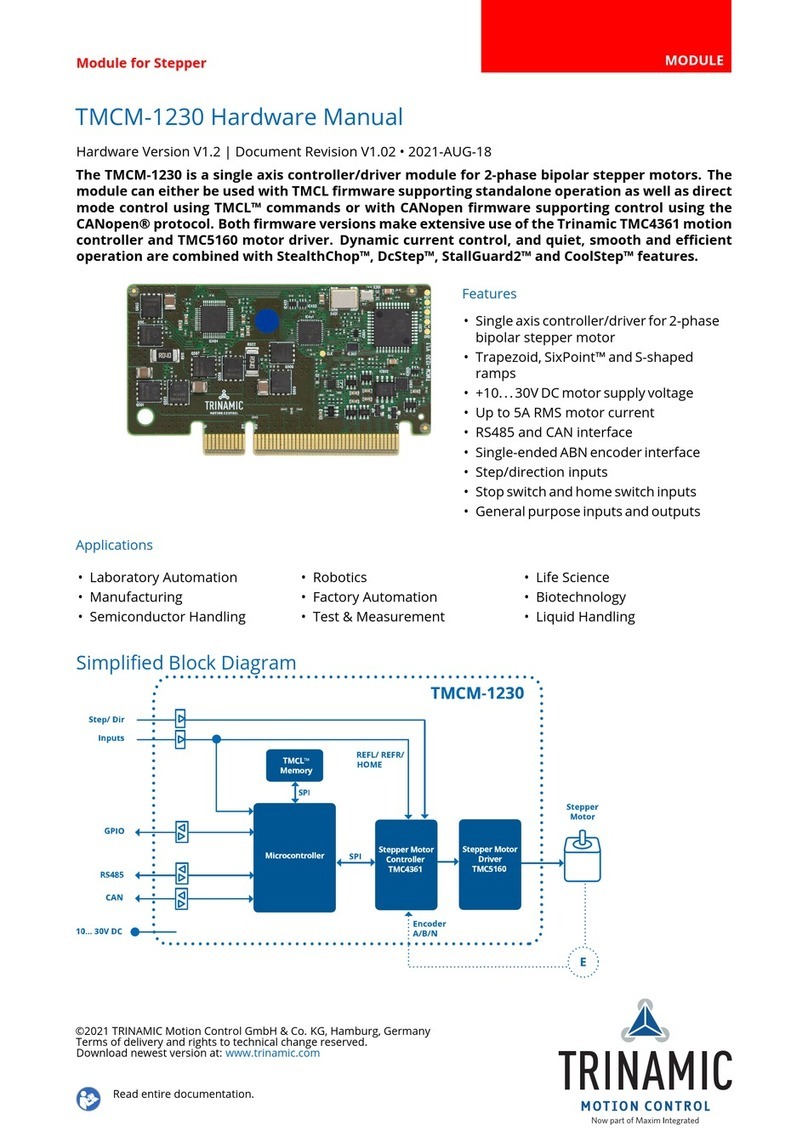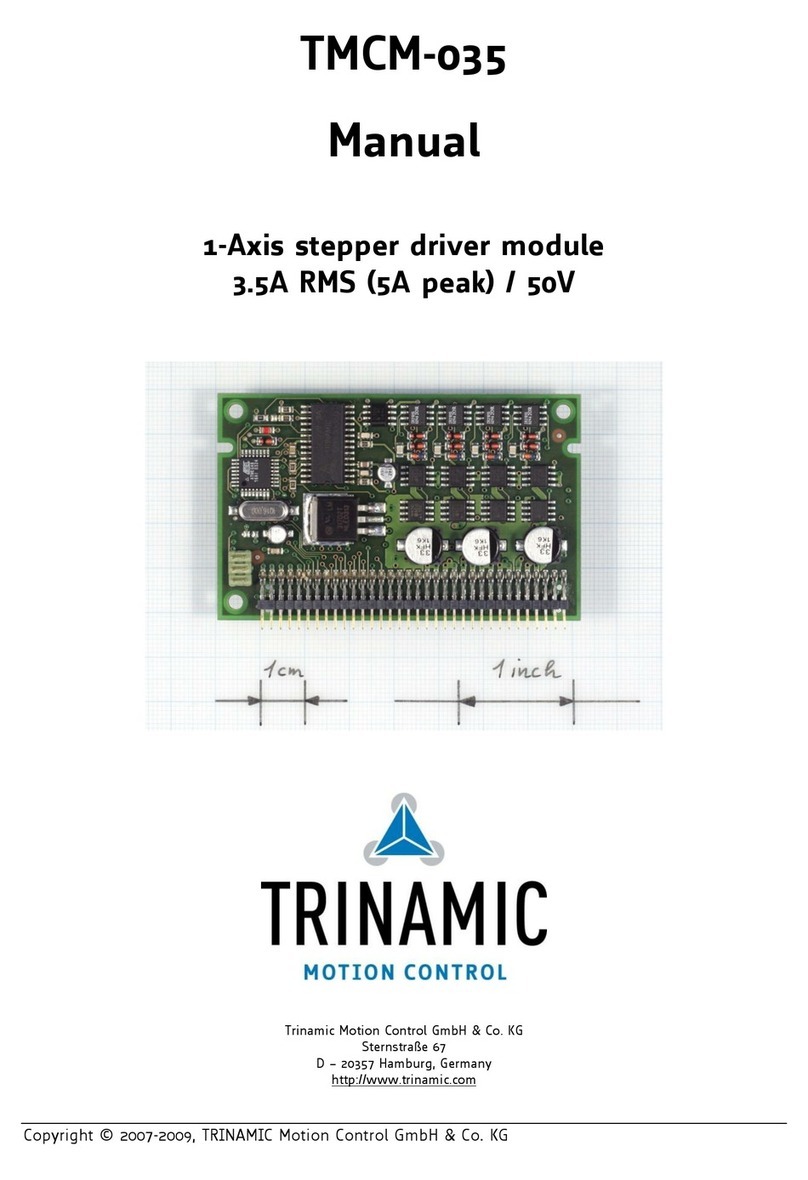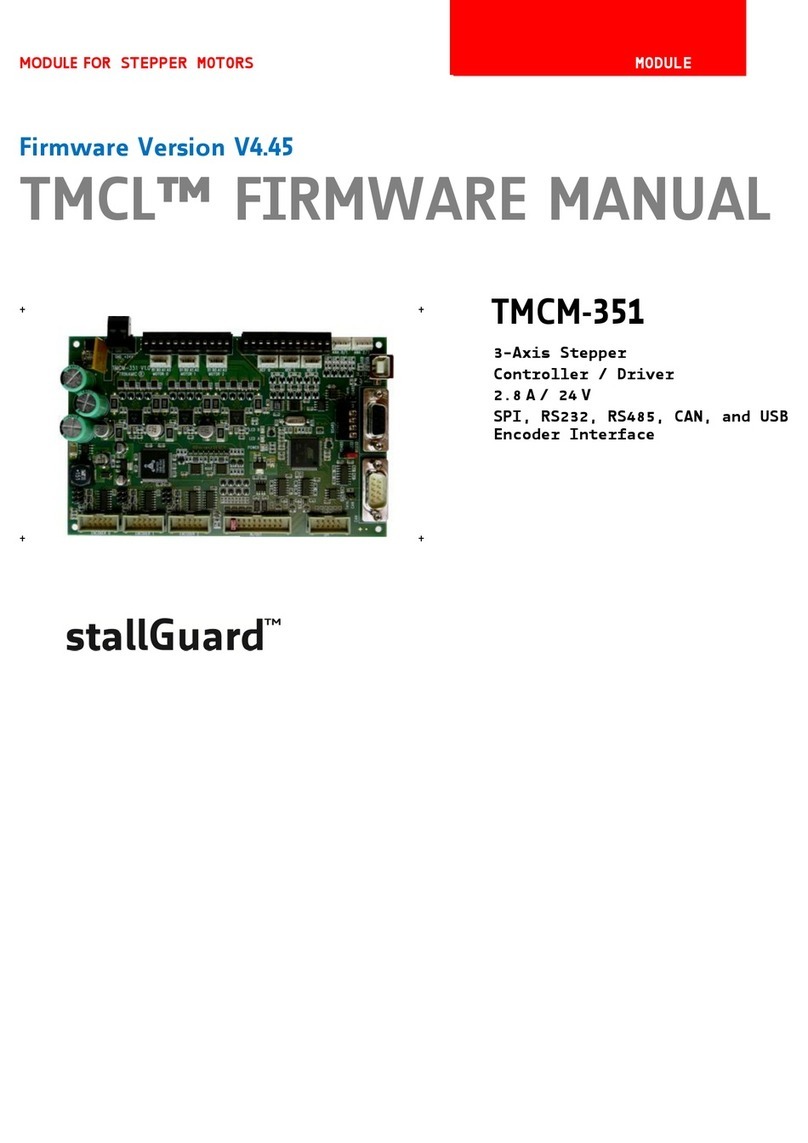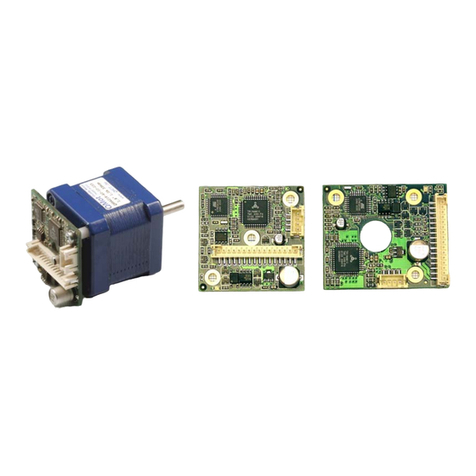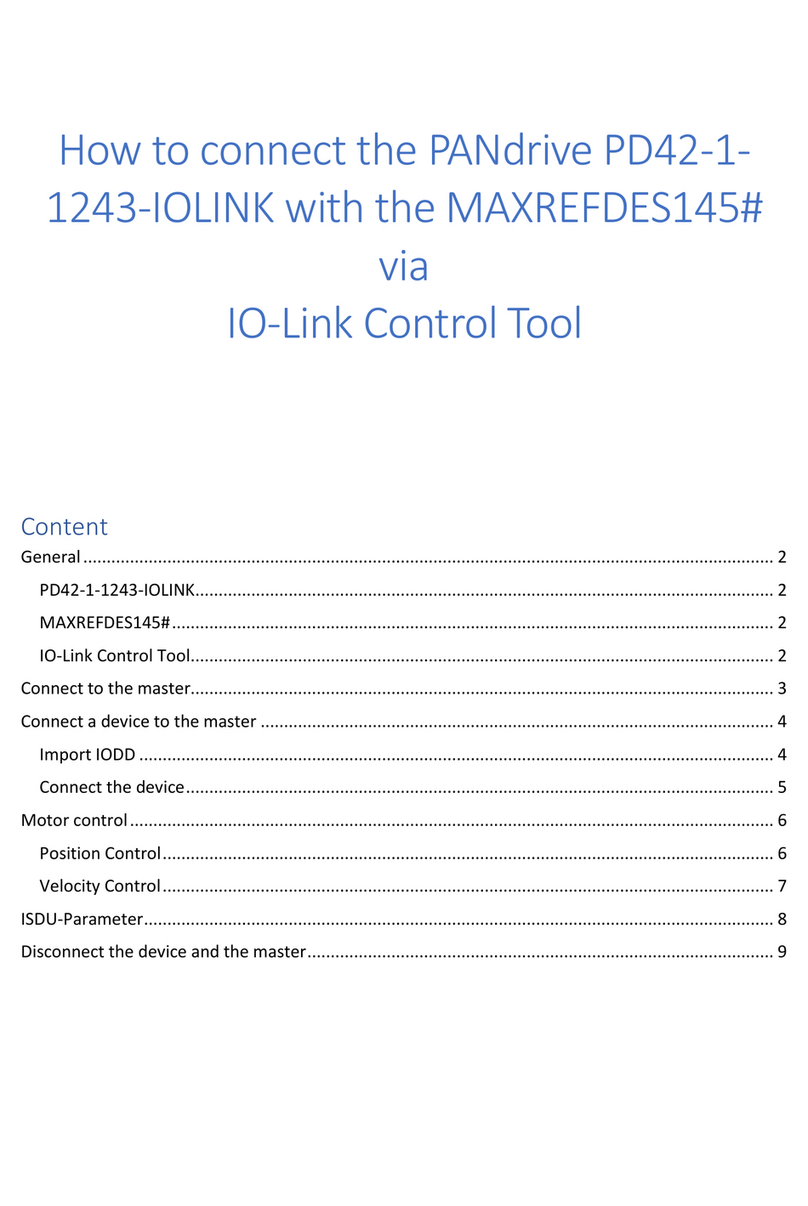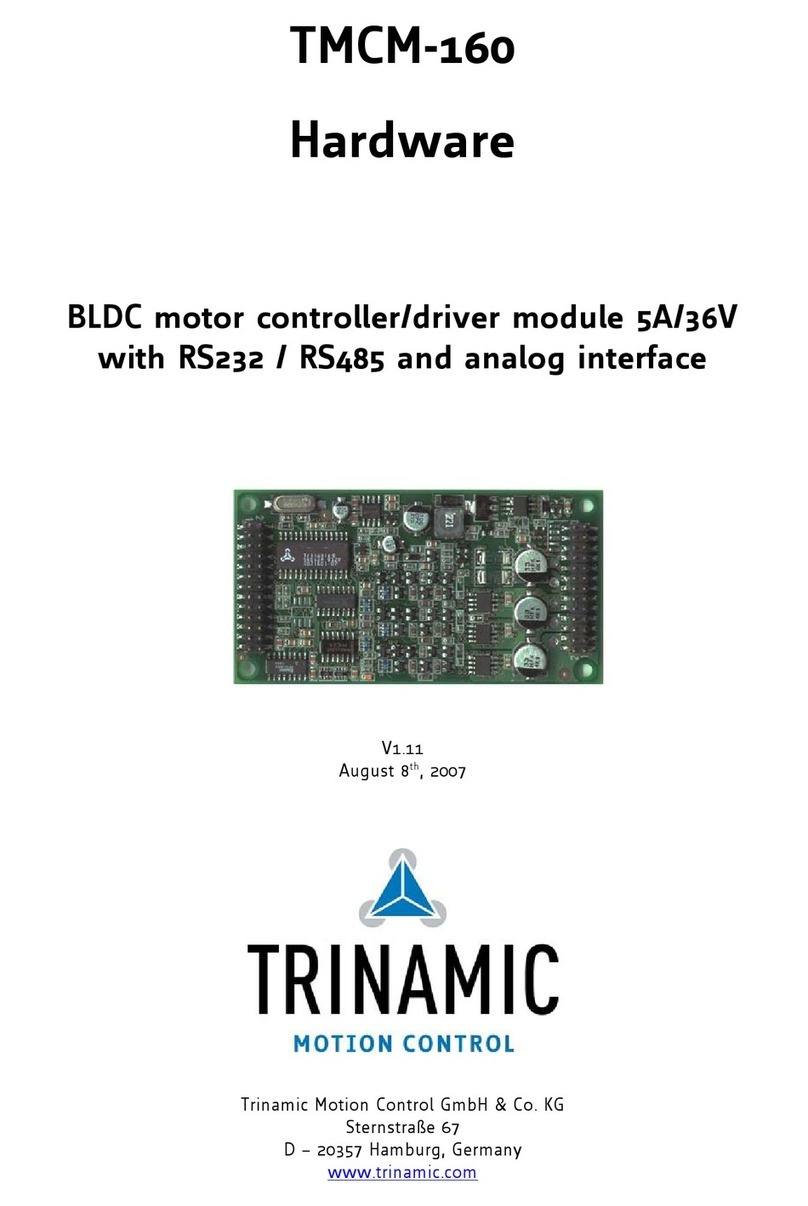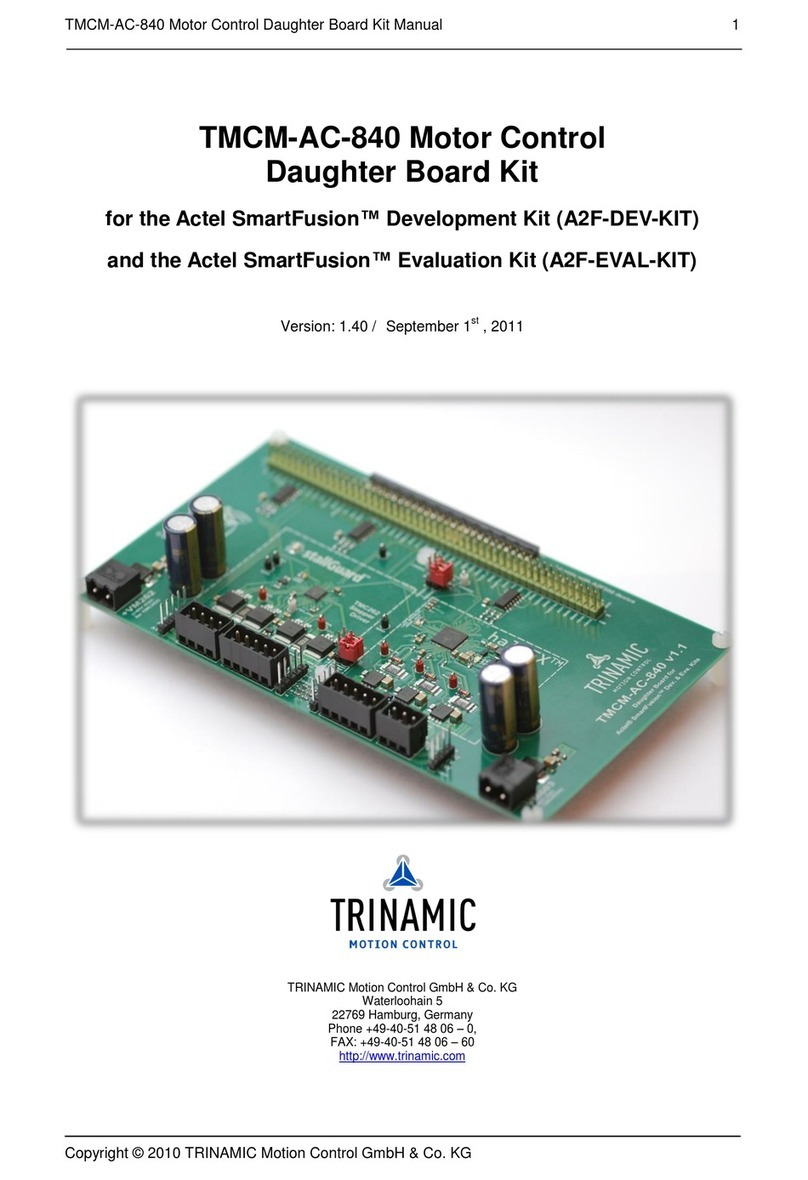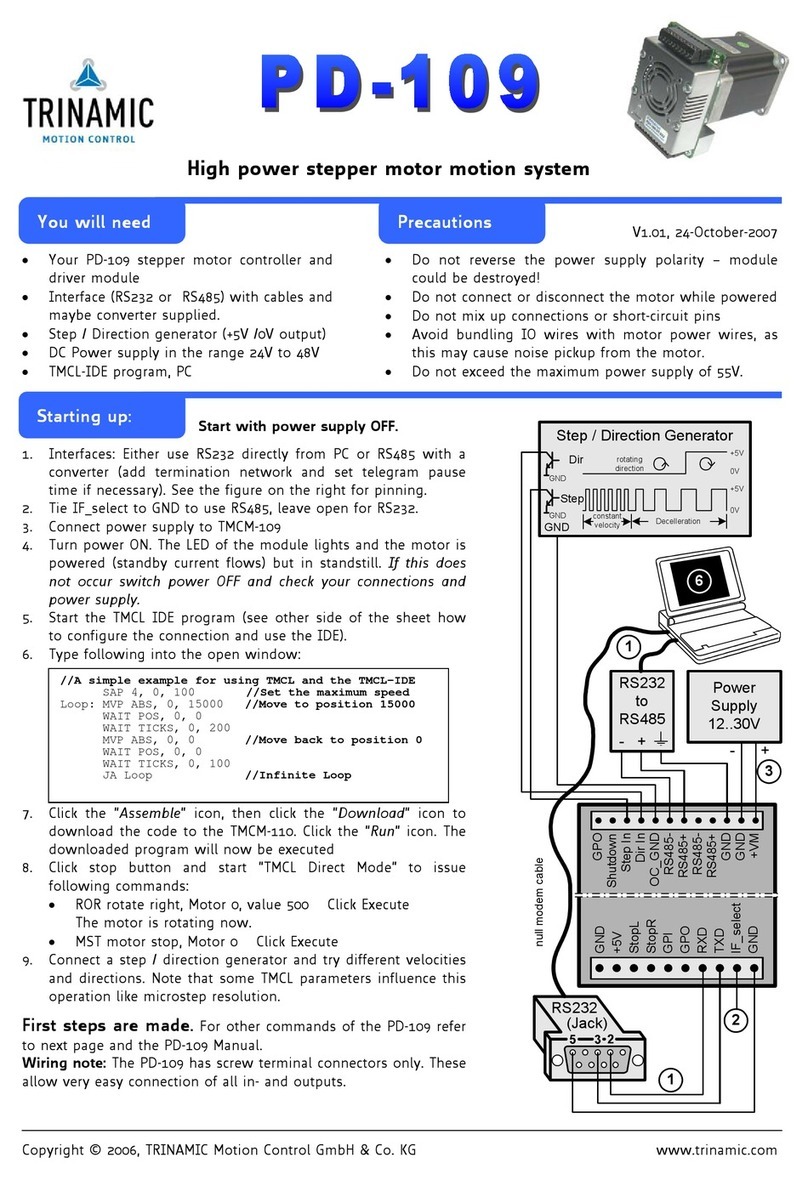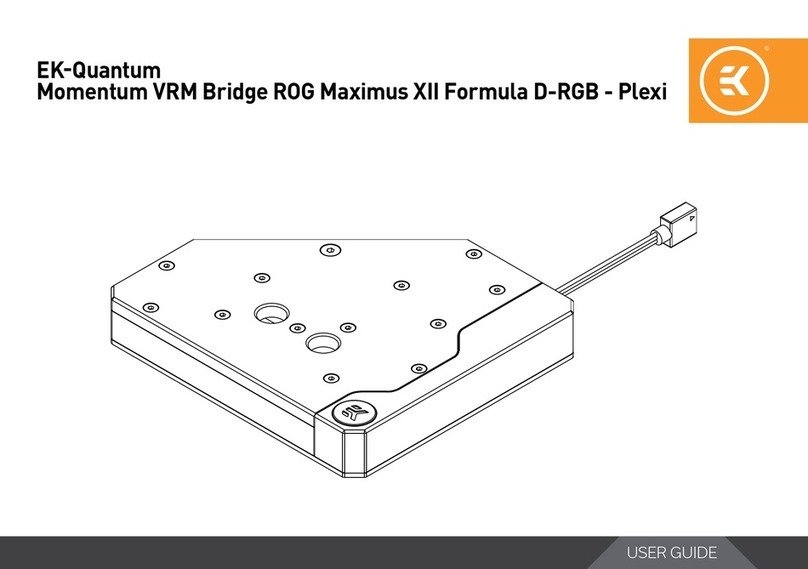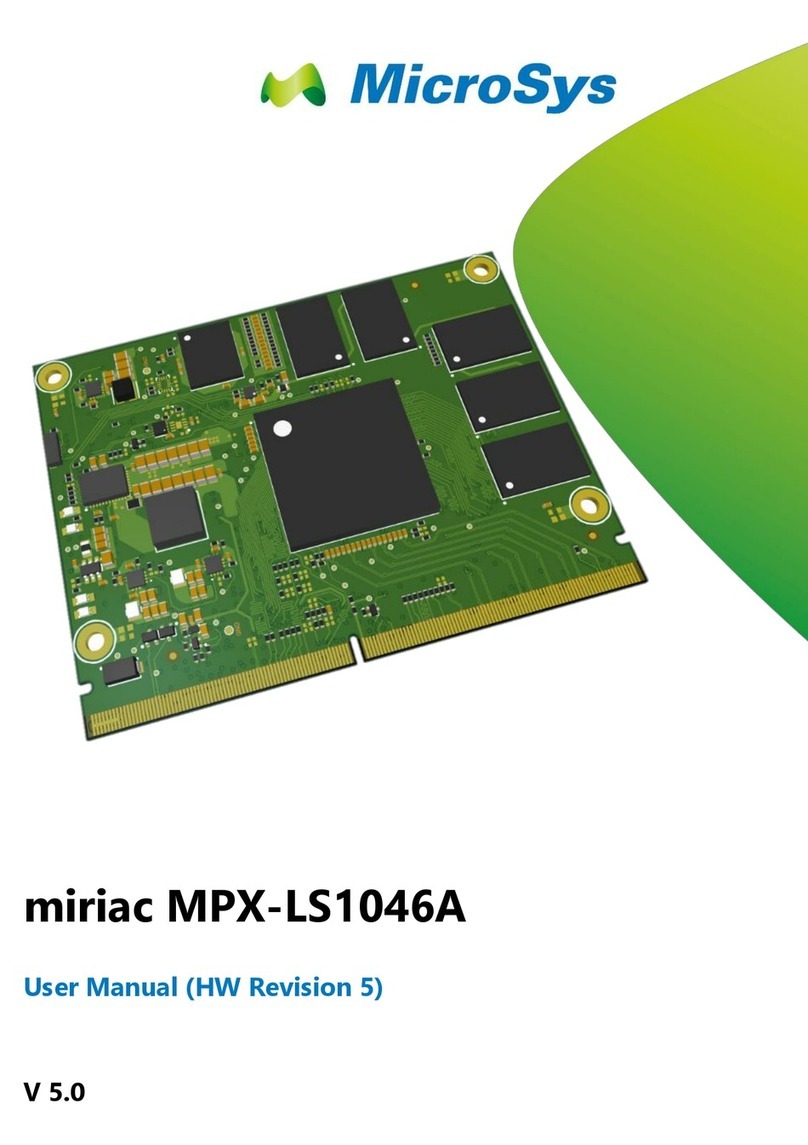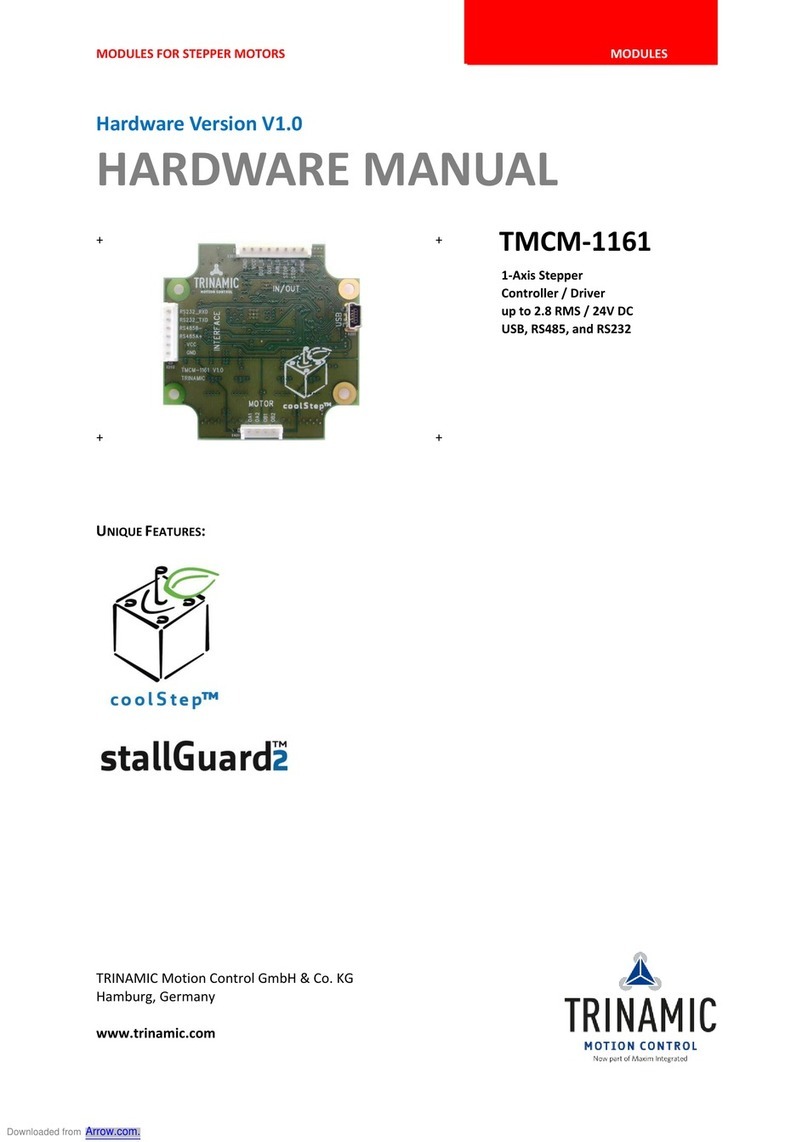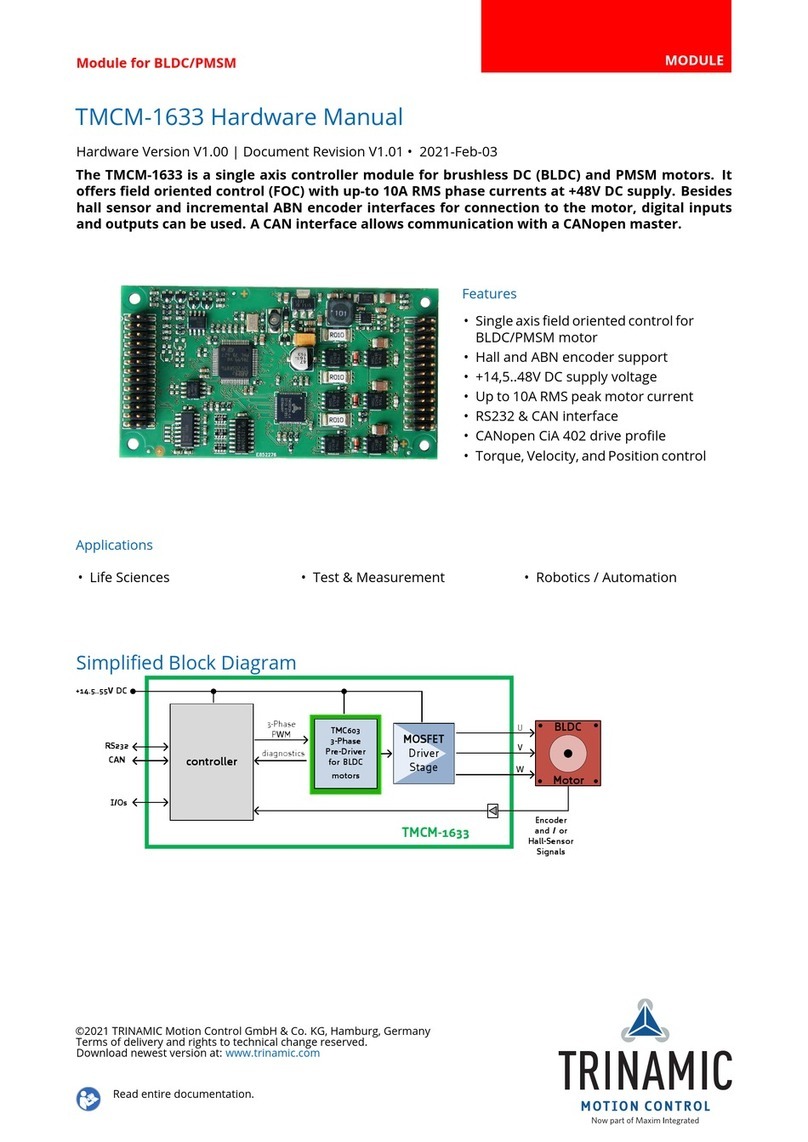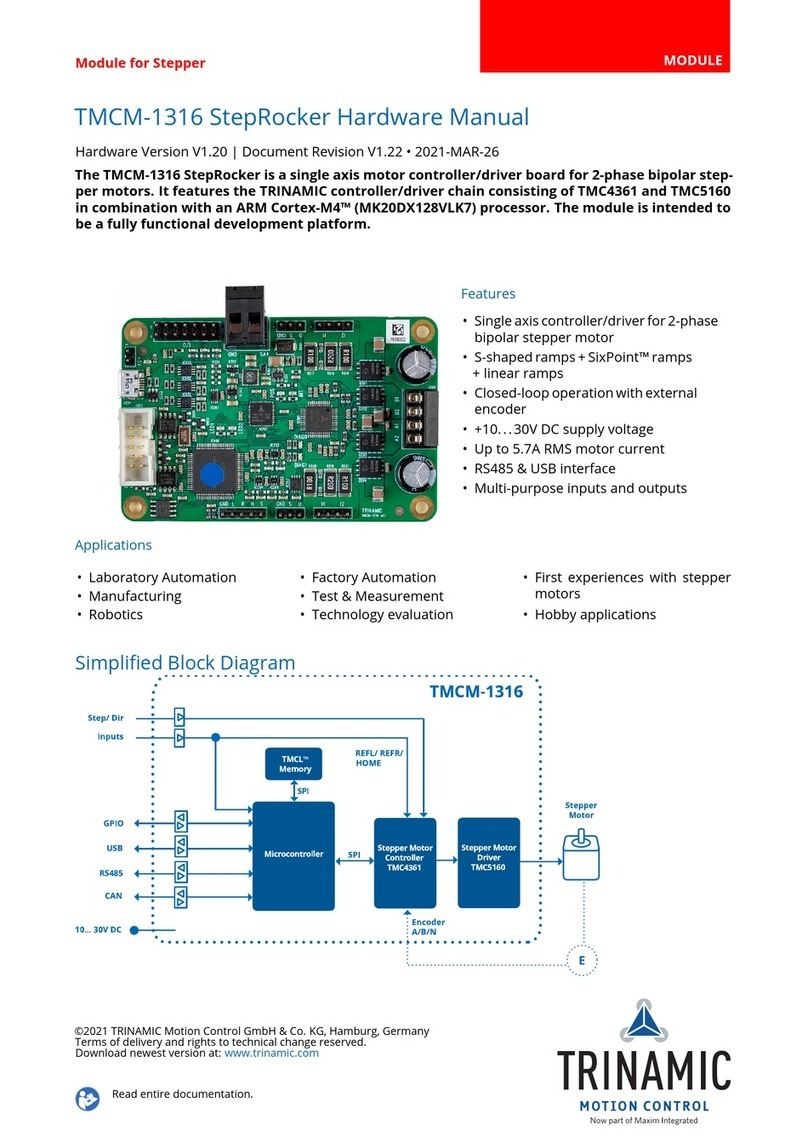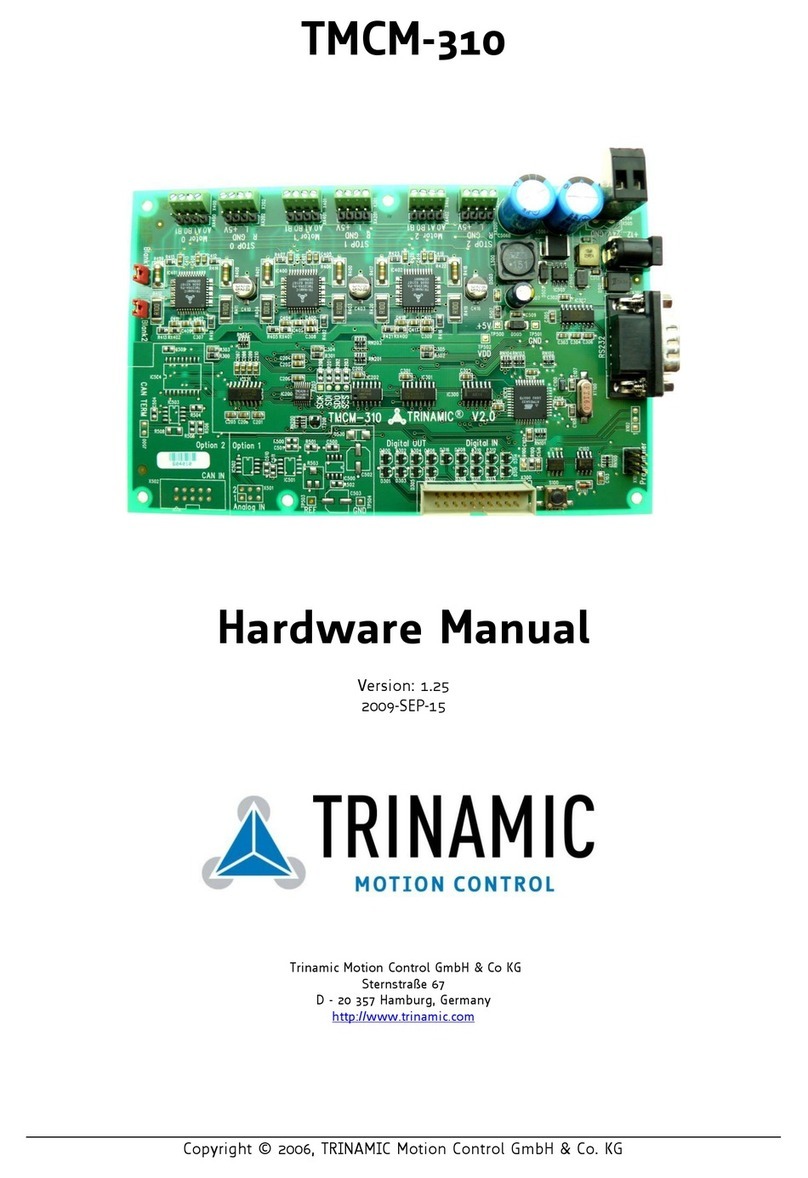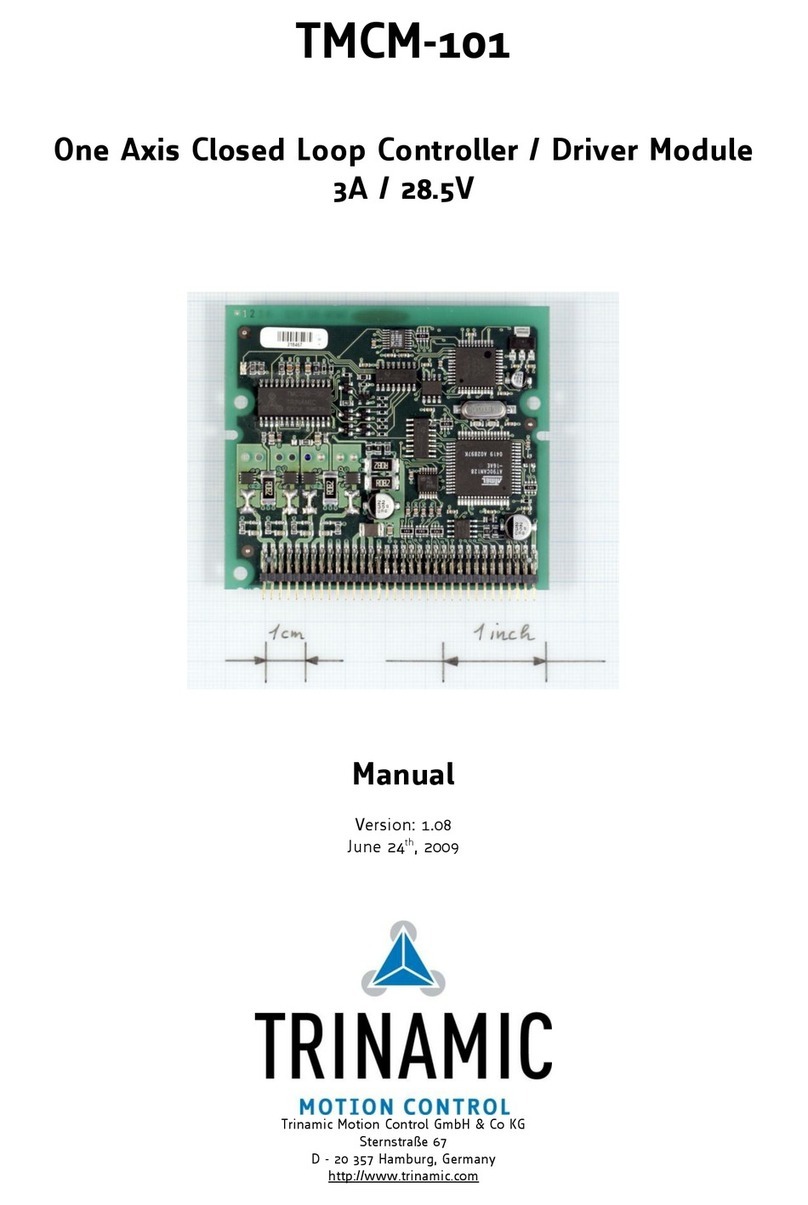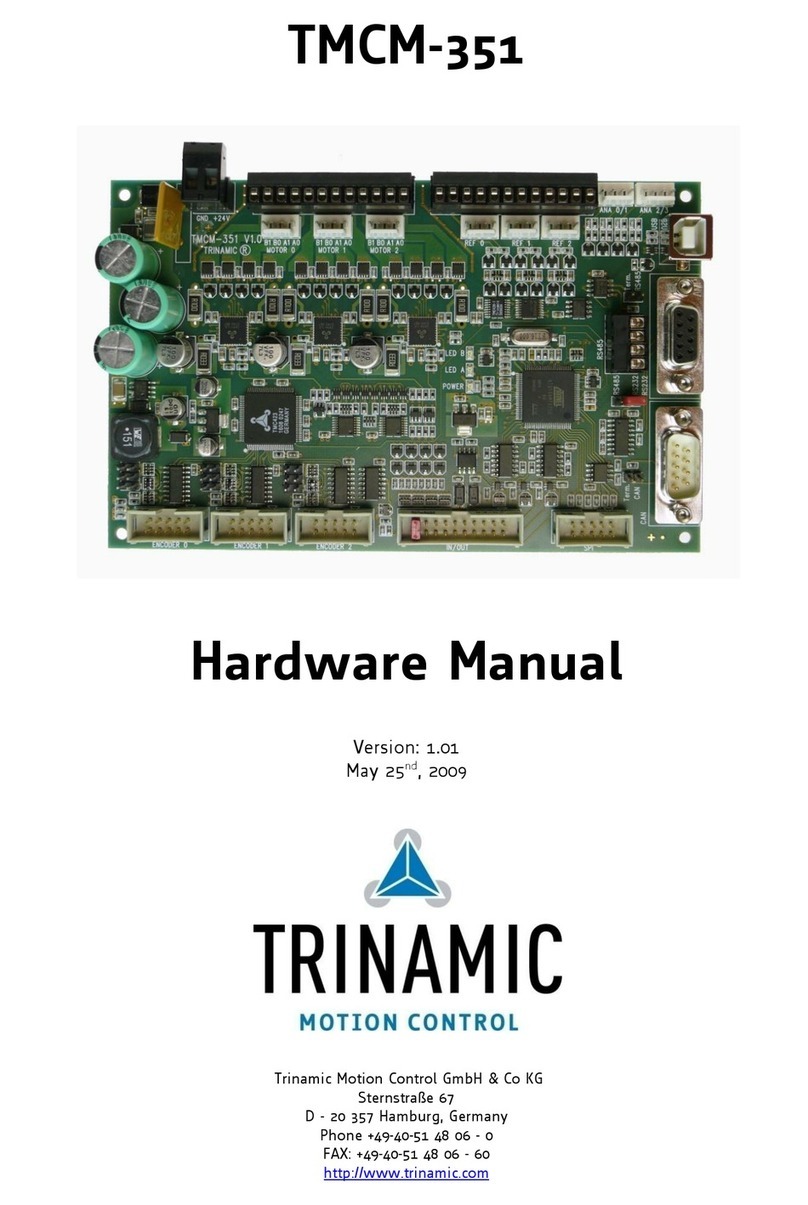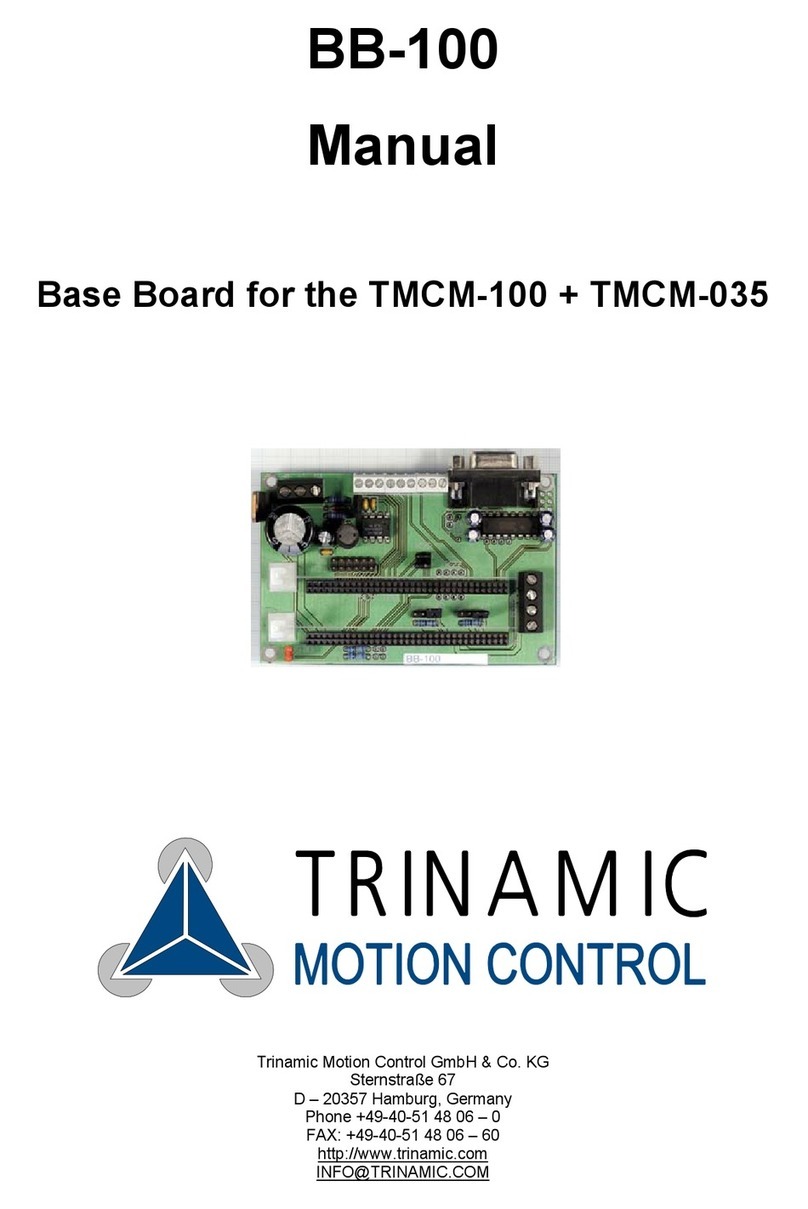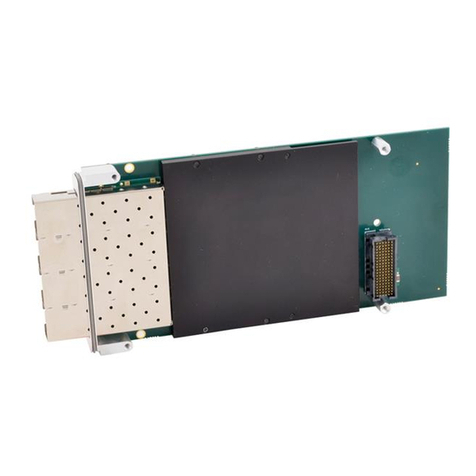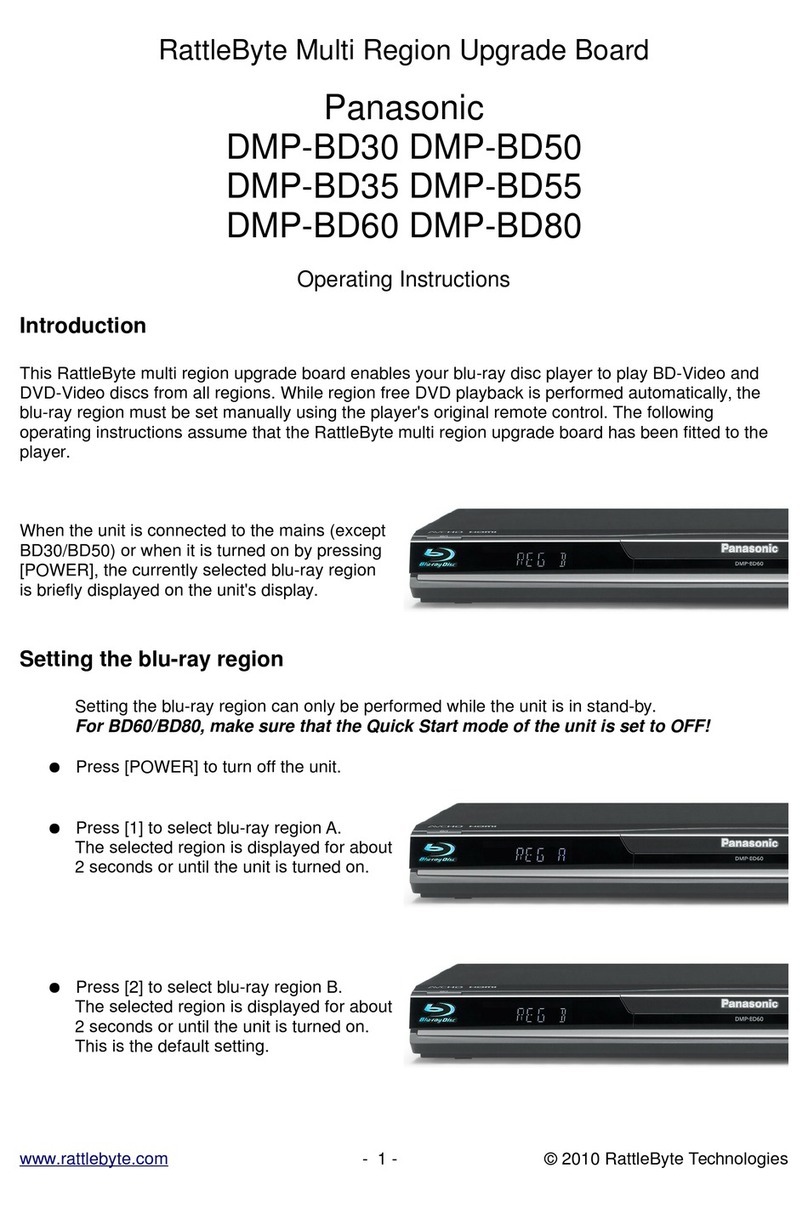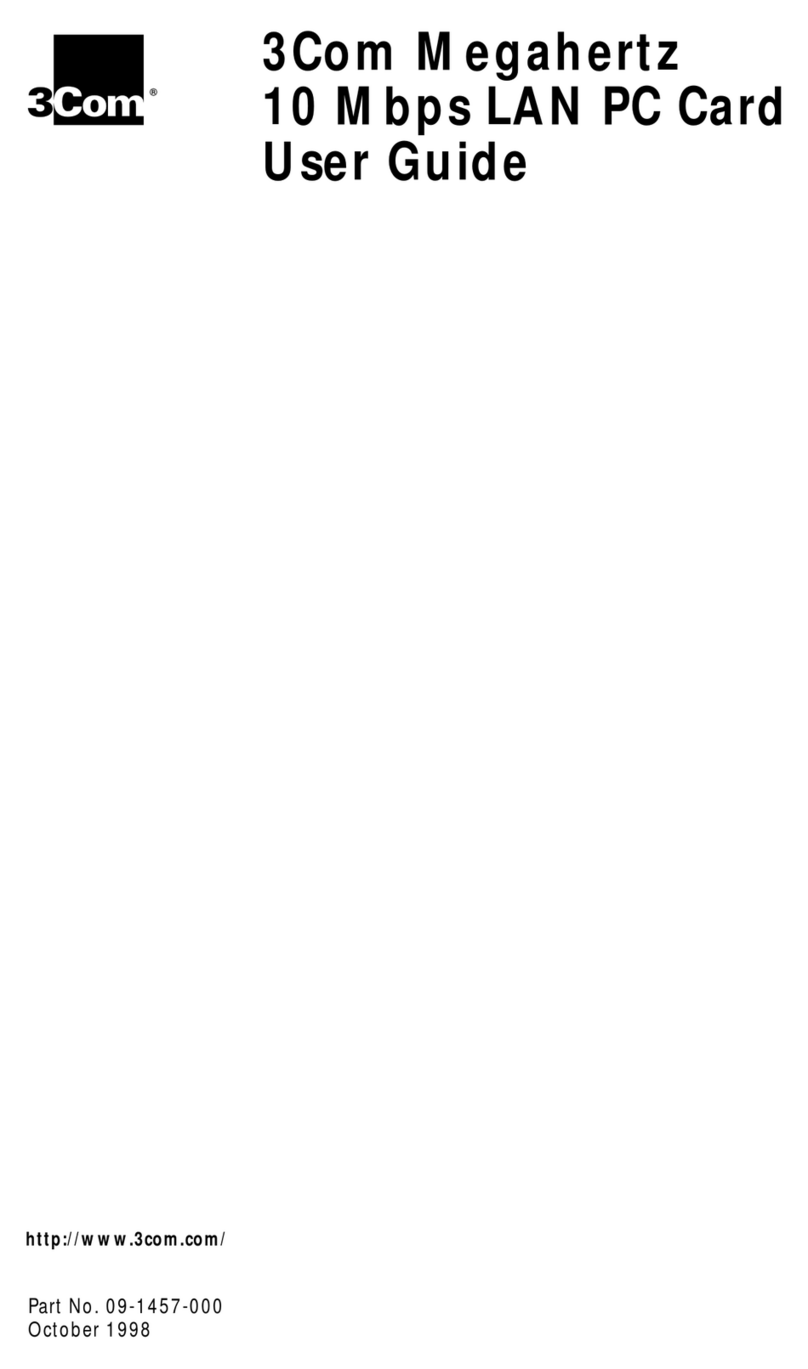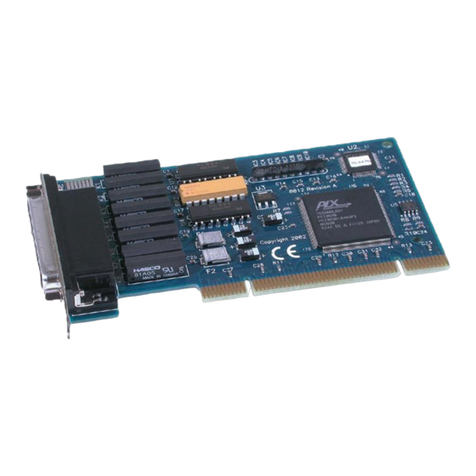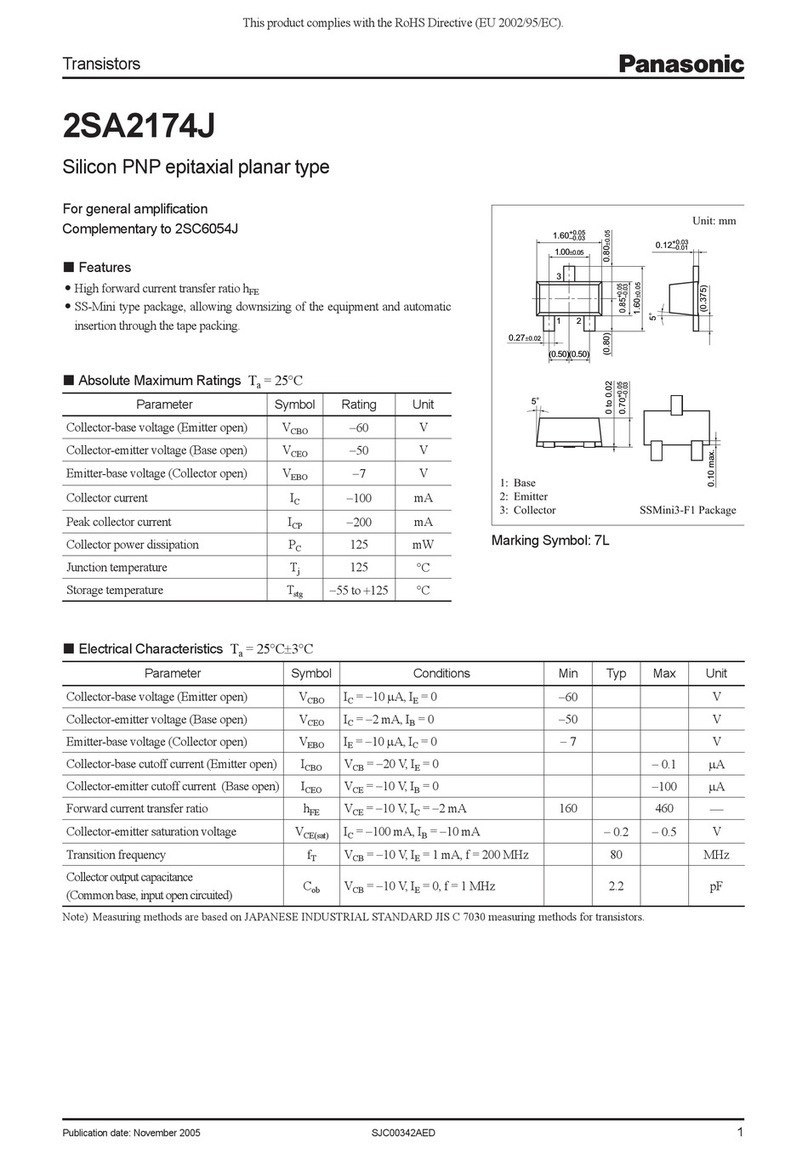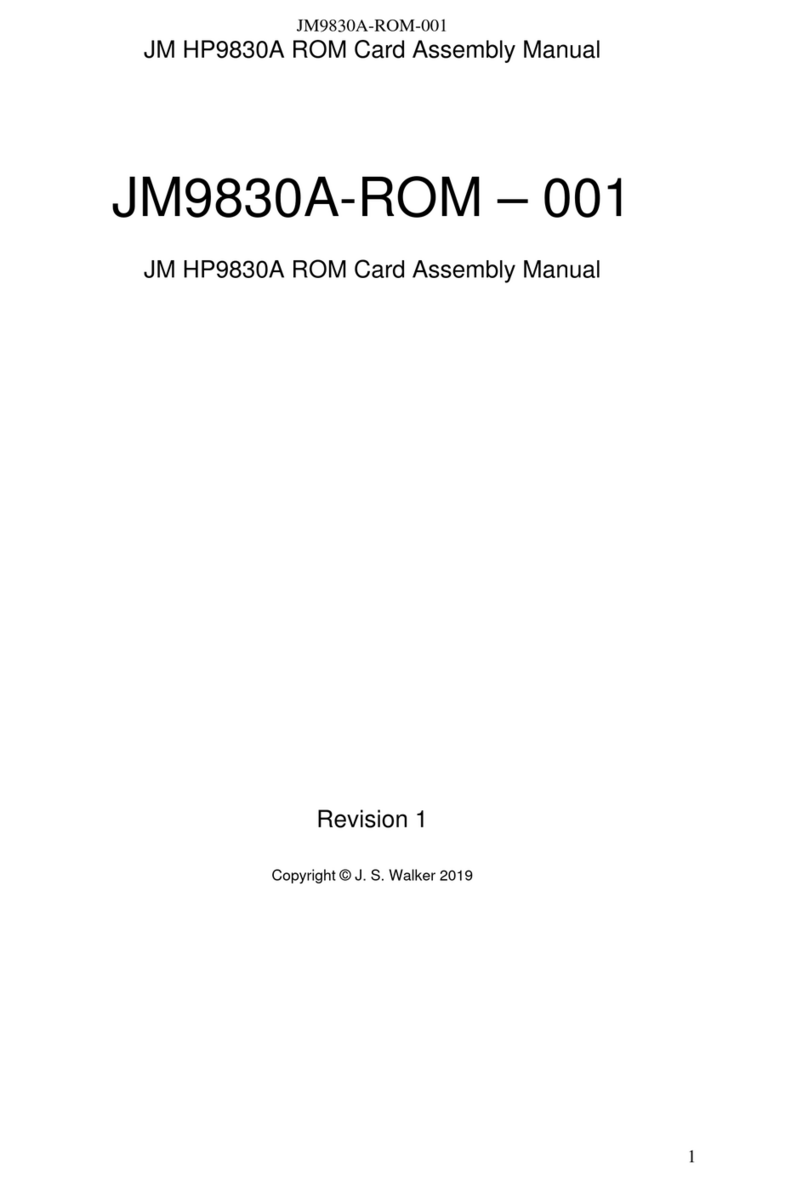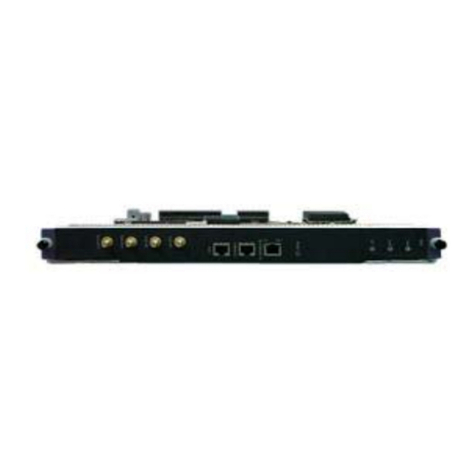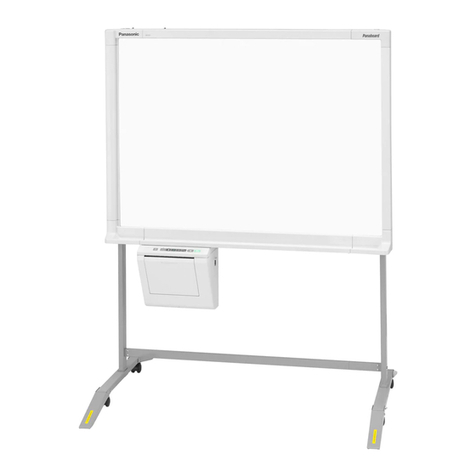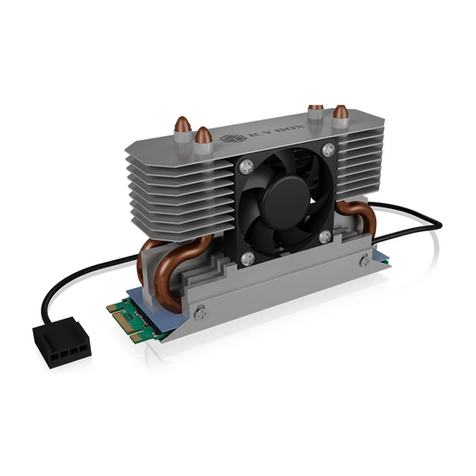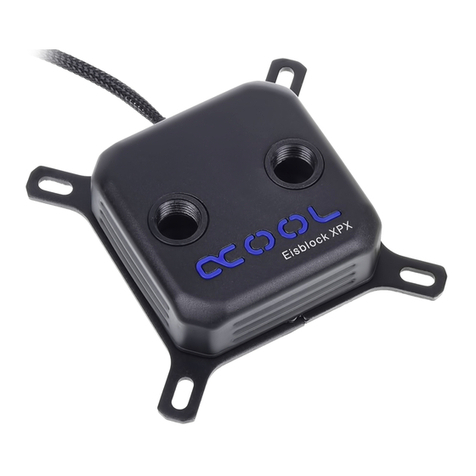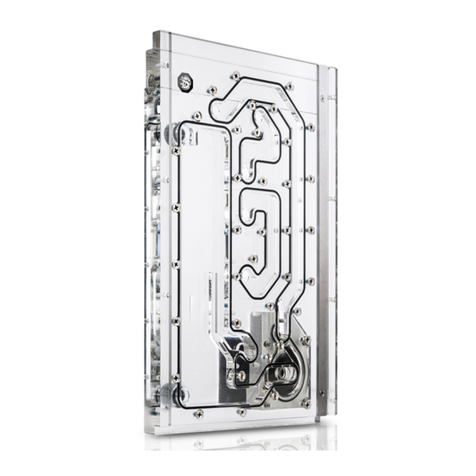
TMCM-142 TMCLTM Firmware Manual (V1.06 / 2014-JUN-24) 2
Copyright © 2009, TRINAMIC Motion Control GmbH & Co. KG
Table of contents
1Life support policy ....................................................................................................................................................... 4
2Features........................................................................................................................................................................... 5
3Order codes.................................................................................................................................................................... 6
4Overview ......................................................................................................................................................................... 7
5Putting the TMCM-142 into operation .................................................................................................................... 8
5.1 Starting up............................................................................................................................................................. 9
5.2 Testing with a simple TMCLTM program ......................................................................................................13
5.3 Operating the module in direct mode ........................................................................................................14
6TMCLTM and TMCL-IDE ................................................................................................................................................15
6.1 Binary command format..................................................................................................................................15
6.2 Reply format........................................................................................................................................................16
6.2.1 Status codes..................................................................................................................................................17
6.3 Stand-alone applications .................................................................................................................................17
6.4 TMCLTM command overview ............................................................................................................................17
6.4.1 Motion commands ......................................................................................................................................17
6.4.2 Parameter commands ................................................................................................................................18
6.4.3 I/O port commands.....................................................................................................................................18
6.4.4 Control commands......................................................................................................................................18
6.4.5 Calculation commands...............................................................................................................................19
6.5 TMCLTM commands.............................................................................................................................................20
6.6 The ASCII interface ...........................................................................................................................................22
6.6.1 Format of the command line...................................................................................................................22
6.6.2 Format of a reply.........................................................................................................................................22
6.6.3 Commands that can be used in ASCII mode .....................................................................................22
6.6.4 Configuring the ASCII interface ..............................................................................................................22
6.7 Commands...........................................................................................................................................................24
6.7.1 ROR (rotate right).........................................................................................................................................24
6.7.2 ROL (rotate left)............................................................................................................................................25
6.7.3 MST (motor stop).........................................................................................................................................26
6.7.4 MVP (move to position).............................................................................................................................27
6.7.5 SAP (set axis parameter) ...........................................................................................................................29
6.7.6 GAP (get axis parameter)...........................................................................................................................34
6.7.7 STAP (store axis parameter) .....................................................................................................................41
6.7.8 RSAP (restore axis parameter) .................................................................................................................46
6.7.9 SGP (set global parameter).......................................................................................................................51
6.7.10 GGP (get global parameter)......................................................................................................................54
6.7.11 STGP (store global parameter).................................................................................................................57
6.7.12 RSGP (restore global parameter).............................................................................................................59
6.7.13 RFS (reference search)................................................................................................................................61
6.7.14 SIO (set output) ...........................................................................................................................................62
6.7.15 GIO (get input/output) ...............................................................................................................................64
6.7.16 CALC (calculate) ............................................................................................................................................66
6.7.17 COMP (compare)...........................................................................................................................................67
6.7.18 JC (jump conditional)..................................................................................................................................68
6.7.19 JA (jump always)..........................................................................................................................................69
6.7.20 CSUB (call subroutine)................................................................................................................................70
6.7.21 RSUB (return from subroutine)................................................................................................................71
6.7.22 WAIT (wait for an event to occur) .........................................................................................................72
6.7.23 STOP (stop TMCLTM program execution) ................................................................................................73
6.7.24 SCO (set coordinate) ...................................................................................................................................74
6.7.25 GCO (get coordinate) ..................................................................................................................................75
6.7.26 CCO (capture coordinate)...........................................................................................................................76
6.7.27 ACO (accu to coordinate)...........................................................................................................................77
6.7.28 CALCX (calculate using the X register) ..................................................................................................78
6.7.29 AAP (accumulator to axis parameter) ....................................................................................................79



















